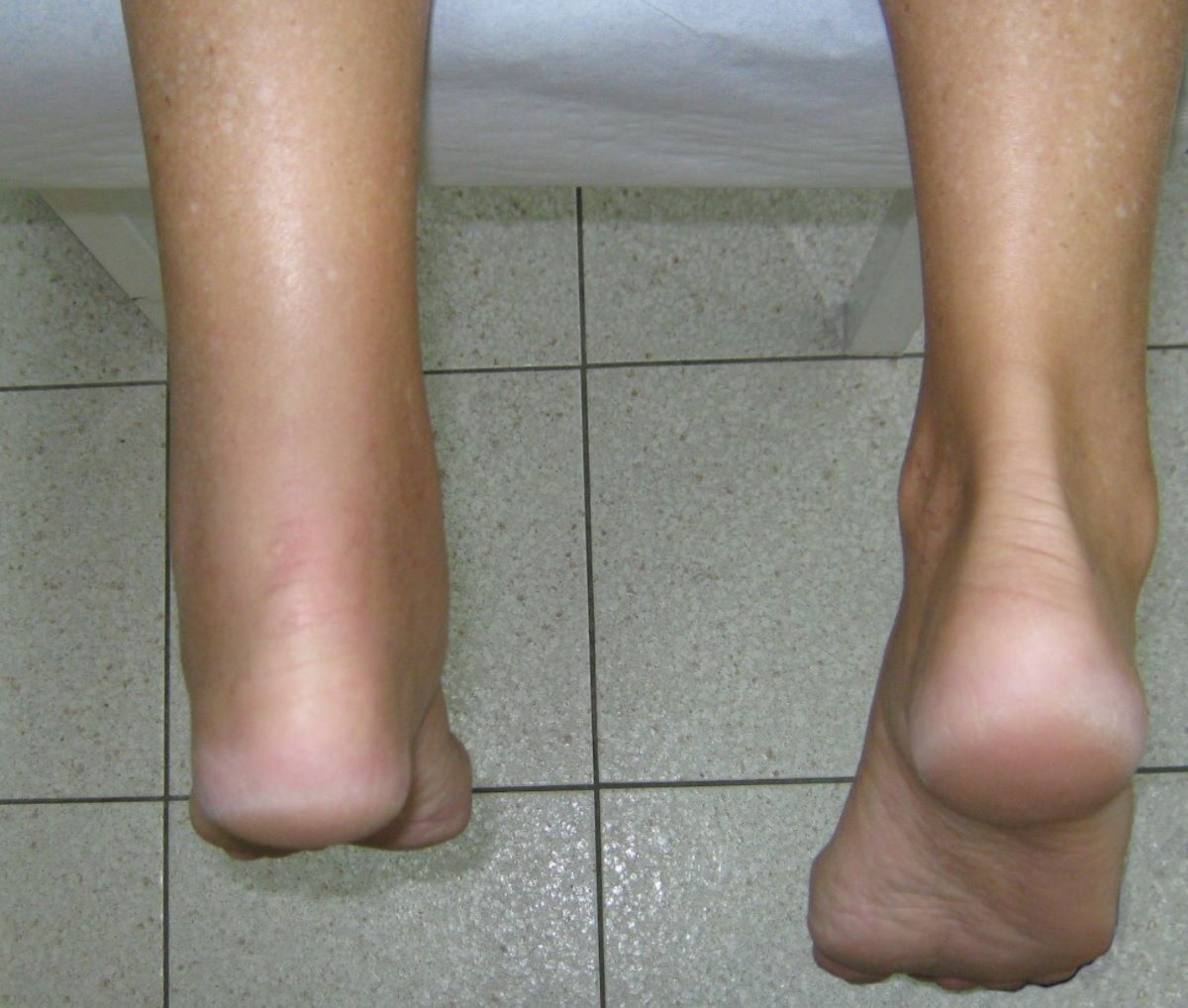Home>Finance>How Much Is Achilles Tendon Surgery With Insurance


Finance
How Much Is Achilles Tendon Surgery With Insurance
Published: November 23, 2023
Find out the cost of Achilles tendon surgery with insurance coverage and explore the financial options available to you. Take control of your finances and get the treatment you need.
(Many of the links in this article redirect to a specific reviewed product. Your purchase of these products through affiliate links helps to generate commission for LiveWell, at no extra cost. Learn more)
Table of Contents
- Introduction
- What is Achilles Tendon Surgery?
- The Cost of Achilles Tendon Surgery
- Factors Affecting the Cost of Achilles Tendon Surgery
- Understanding Insurance Coverage for Achilles Tendon Surgery
- How Much Does Achilles Tendon Surgery Cost with Insurance?
- Finding the Right Insurance Coverage for Achilles Tendon Surgery
- Conclusion
Introduction
Welcome to our comprehensive guide on the cost of Achilles tendon surgery with insurance. If you are facing the prospect of Achilles tendon surgery, it is essential to understand the financial implications associated with the procedure. The Achilles tendon, located at the back of the ankle, is a strong fibrous tissue that connects the calf muscle to the heel bone. Unfortunately, it is prone to injury, with conditions such as Achilles tendonitis and ruptures commonly affecting athletes, older adults, and individuals who participate in high-impact activities.
When conservative treatments fail to provide relief or repair, Achilles tendon surgery may be recommended by your orthopedic surgeon. This surgical procedure involves repairing or replacing the damaged portion of the tendon to restore its strength and function. While the primary concern for most individuals is their well-being and recovery, it is important to be aware of the financial aspects associated with the surgery, including the cost and insurance coverage.
Understanding the cost of Achilles tendon surgery with insurance is crucial for proper financial planning and ensuring that you have access to the necessary medical care. In this guide, we will explore the factors that influence the cost of the procedure, the different types of insurance coverage available, and how much you can expect to pay with insurance.
It is important to note that the cost of Achilles tendon surgery can vary significantly depending on various factors, such as the severity of the injury, the chosen surgical technique, the location, and the healthcare provider. Additionally, insurance coverage can greatly impact the actual amount you will have to pay out-of-pocket.
By equipping yourself with knowledge about the cost and insurance coverage for Achilles tendon surgery, you can make informed decisions about your healthcare options and navigate the financial aspect of the procedure more effectively. So, let’s delve into the details and demystify the cost of Achilles tendon surgery with insurance.
What is Achilles Tendon Surgery?
Achilles tendon surgery is a medical procedure performed to repair or reconstruct the Achilles tendon, which is the largest tendon in the body. This procedure is typically recommended when conservative treatments, such as rest, physical therapy, or immobilization, have failed to alleviate the symptoms or restore the function of the tendon.
The Achilles tendon plays a crucial role in walking, running, and jumping by connecting the calf muscles to the heel bone. However, it is prone to injuries, especially among individuals who engage in activities that place repetitive stress on the tendon, such as athletes and runners.
Two common conditions that may require Achilles tendon surgery are:
- Achilles Tendonitis: This condition refers to the inflammation of the Achilles tendon caused by overuse or degeneration. It typically presents with pain, swelling, and stiffness at the back of the ankle. If conservative treatments do not provide relief, surgery may be recommended to remove damaged tissue and stimulate healing.
- Achilles Tendon Rupture: A rupture occurs when the Achilles tendon tears partially or completely. This injury is often sudden and may feel like a sudden snap or pop at the back of the ankle. Surgery is commonly performed to reconnect and repair the torn ends of the tendon, facilitating proper healing and restoring its function.
During Achilles tendon surgery, the surgeon will make an incision near the damaged area and carefully assess the extent of the injury. The specific surgical technique employed will depend on the severity of the condition and the surgeon’s preference. Some common Achilles tendon surgery procedures include:
- Open Tendon Repair: In this procedure, the surgeon makes a single large incision along the back of the ankle to access the damaged Achilles tendon. The torn ends of the tendon are then stitched back together, and any additional repairs, such as debridement or removal of scar tissue, may be performed as needed.
- Minimally Invasive Surgery: Also known as percutaneous or limited-incision surgery, this technique involves making several small incisions rather than one large incision. The surgeon uses specialized instruments to access the torn tendon and repairs it using sutures or anchors. Minimally invasive surgery may have a shorter recovery time and reduced scarring compared to open tendon repair.
- Tendon Transfer: In severe cases where the Achilles tendon is severely damaged or deficient, a tendon transfer may be necessary. This involves taking a tendon from another part of the body, such as the hamstring or foot, and using it to strengthen or replace the damaged Achilles tendon.
It is important to note that the surgical approach used will depend on several factors, including the extent of the tendon injury, the patient’s overall health, and the surgeon’s expertise. Your orthopedic surgeon will thoroughly evaluate your condition and recommend the most appropriate surgical technique for you.
The Cost of Achilles Tendon Surgery
When considering Achilles tendon surgery, it is important to be aware of the potential cost associated with the procedure. The cost of Achilles tendon surgery can vary significantly depending on several factors, including the location, the healthcare provider, the type of surgical technique used, and the complexity of the case.
On average, Achilles tendon surgery can range from $6,000 to $12,000 or more. However, it is crucial to note that this is only an estimate and actual costs may differ based on individual circumstances. The cost of the procedure typically includes several components:
- Surgeon’s Fees: This covers the cost of the orthopedic surgeon’s expertise and time spent performing the surgery.
- Anesthesia Fees: Since Achilles tendon surgery requires anesthesia, there will be fees associated with the anesthesiologist’s services.
- Hospital or Facility Fees: The use of the operating room, medical equipment, and other healthcare facility services will be factored into the cost.
- Preoperative and Postoperative Care: This includes any consultations, diagnostic tests, medications, and follow-up appointments required before and after the surgery.
It is important to discuss the specific costs and billing procedures with your healthcare provider prior to undergoing Achilles tendon surgery. Understanding the breakdown of costs will help you plan and prepare financially for the procedure.
In addition to the abovementioned expenses, it’s important to consider any potential additional costs that may arise during the recovery process. Physical therapy sessions, mobility aids such as crutches or knee scooters, medications, and other miscellaneous expenses should also be taken into account.
It is worth noting that the cost of Achilles tendon surgery without insurance can be quite substantial and may pose a significant financial burden for many individuals. However, insurance coverage can help alleviate some of these costs; therefore, it is essential to explore your insurance options and understand what is covered.
In the following sections, we will delve into the different factors that can influence the cost of Achilles tendon surgery, as well as the role of insurance in financial coverage for the procedure.
Factors Affecting the Cost of Achilles Tendon Surgery
The cost of Achilles tendon surgery can vary based on several factors. Understanding these factors will give you a better idea of why there can be a significant difference in the overall cost of the procedure. Some of the key factors that can influence the cost of Achilles tendon surgery include:
- Type of Surgery: The specific surgical technique used to repair or reconstruct the Achilles tendon can impact the cost. Minimally invasive procedures may have higher upfront costs due to the specialized equipment and expertise required.
- Severity of the Injury: The extent of the Achilles tendon injury can affect the complexity of the surgery. More severe injuries may require additional procedures or a longer recovery time, which can contribute to higher overall costs.
- Location: The geographical location where the surgery is performed can influence the cost. Areas with a higher cost of living or greater demand for healthcare services may have higher prices for Achilles tendon surgery.
- Healthcare Provider: Different healthcare providers may charge varying fees for Achilles tendon surgery based on their expertise, reputation, and location. It is essential to research and compare prices among different providers to ensure you are receiving quality care at a reasonable cost.
- Additional Treatments or Procedures: Depending on your specific case, there may be additional treatments or procedures recommended alongside Achilles tendon surgery, such as physical therapy or imaging studies. These additional treatments can contribute to the overall cost.
- Insurance Coverage: Insurance coverage plays a significant role in the overall cost you will need to pay out-of-pocket for Achilles tendon surgery. The type of insurance plan you have and its coverage policies for surgical procedures will impact your financial responsibility.
It is important to discuss these factors with your orthopedic surgeon and healthcare provider to get a more accurate estimate of the cost of Achilles tendon surgery in your specific situation. They can provide you with detailed information about the expected expenses and help you navigate the financial aspects of the procedure.
By being aware of the factors that can affect the cost, you can make informed decisions about the best approach for your Achilles tendon surgery while considering your budget and financial circumstances.
Understanding Insurance Coverage for Achilles Tendon Surgery
Insurance coverage plays a crucial role in determining the financial responsibility of the patient for Achilles tendon surgery. However, it is important to understand that the extent of coverage can vary depending on the type of insurance plan you have and the specific policies outlined by your insurance provider.
Most insurance plans, whether they are private health insurance or government programs, such as Medicare or Medicaid, typically cover Achilles tendon surgery. However, it is essential to review your policy documents or contact your insurance provider directly to understand the specific coverage details, including deductibles, co-pays, and out-of-pocket limits.
Here are some important aspects to consider when it comes to understanding insurance coverage for Achilles tendon surgery:
- Pre-Authorization: Many insurance plans require pre-authorization for surgical procedures, including Achilles tendon surgery. This means that you must receive approval from your insurance provider before undergoing the surgery to ensure it is deemed medically necessary.
- In-Network vs. Out-of-Network: Insurance plans often have a network of healthcare providers with whom they have negotiated contracted rates. It is usually more cost-effective to receive care from an in-network provider. Make sure that your surgeon and the healthcare facility where the surgery will be performed are in-network to maximize your insurance coverage.
- Deductibles and Co-Pays: Your insurance plan may have a deductible, which is the amount you must pay out-of-pocket before your insurance coverage kicks in. Additionally, you may be responsible for co-pays, which are set amounts or percentages you must pay for each visit or service. Understanding these cost-sharing aspects is crucial to budgeting for Achilles tendon surgery.
- Out-of-Pocket Limits: Insurance plans often have an annual out-of-pocket maximum, which is the maximum amount you will have to pay for covered services in a calendar year. Once you reach this limit, the insurance company will cover 100% of the remaining costs. It is important to know this limit to plan for any potential out-of-pocket expenses for Achilles tendon surgery.
- Coverage for Rehabilitative Services: Since rehabilitation and physical therapy are often necessary after Achilles tendon surgery, it is essential to understand if your insurance plan covers these services and to what extent.
Remember that every insurance policy is different, so reviewing your plan carefully and seeking clarification from your insurance provider is crucial to understanding your coverage for Achilles tendon surgery. It is recommended to keep records of all conversations with the insurance company, including names, dates, and details discussed, for reference in case of any discrepancies or appeals.
Having a clear understanding of your insurance coverage will help you make informed decisions about your healthcare and financial responsibilities for Achilles tendon surgery.
How Much Does Achilles Tendon Surgery Cost with Insurance?
The cost of Achilles tendon surgery with insurance can vary depending on your specific insurance plan and the coverage policies set by your insurance provider. While insurance coverage significantly reduces the financial burden, it is important to understand that you may still be responsible for certain out-of-pocket expenses.
With insurance coverage, the cost of Achilles tendon surgery can be significantly lower than the full, uninsured cost. However, it is crucial to consider the following factors:
- Deductibles: If your insurance plan has a deductible, you will need to pay that amount out-of-pocket before your insurance coverage begins. Depending on the deductible amount, you may need to cover a significant portion of the surgery cost before insurance kicks in.
- Co-Pays or Coinsurance: In addition to the deductible, you may also be responsible for co-pays or coinsurance, which are the portions of the cost that you must pay after meeting the deductible. This can be a fixed amount or a percentage of the total cost, depending on your insurance plan.
- In-Network vs. Out-of-Network: Utilizing an in-network surgeon and healthcare facility will typically result in lower out-of-pocket costs since insurance plans have negotiated discounted rates with these providers. If you choose an out-of-network provider, your insurance may cover a lower percentage of the cost, resulting in higher out-of-pocket expenses.
- Plan Limits and Coverage: Your insurance plan may have specific limits on coverage for Achilles tendon surgery, such as a maximum allowable amount or a limit on the number of covered visits or procedures. Make sure to review your plan to understand the coverage details.
Ultimately, the actual amount you will have to pay out-of-pocket for Achilles tendon surgery will depend on the specifics of your insurance plan and the negotiated rates with your healthcare provider. It is essential to check with your insurance provider to get an estimate of your financial responsibility.
Keep in mind that even though insurance coverage can help reduce the cost, it is still advisable to budget for potential out-of-pocket expenses. These costs may include deductibles, co-pays, coinsurance, and any additional treatments or services not covered by your insurance plan.
Remember to keep all documentation related to your insurance coverage and any payments made, as these will be essential for filing claims, appealing any discrepancies, or seeking reimbursement if necessary.
By understanding the specifics of your insurance coverage and planning accordingly, you can have a better idea of the anticipated costs and make informed decisions about Achilles tendon surgery while considering your budget and financial circumstances.
Finding the Right Insurance Coverage for Achilles Tendon Surgery
When it comes to Achilles tendon surgery, having the right insurance coverage is essential to ensure that you can access the necessary medical care without incurring significant financial burdens. Here are some steps to help you find the right insurance coverage for Achilles tendon surgery:
- Evaluate your current insurance plan: If you already have health insurance, review your plan documents and contact your insurance provider to understand the coverage and benefits related to surgical procedures. Pay attention to factors such as deductibles, co-pays, and out-of-pocket limits.
- Consider employer-sponsored insurance: If you receive health insurance through your employer, familiarize yourself with the coverage options available. Compare the different plans offered and assess how well they align with your needs, including coverage for Achilles tendon surgery.
- Explore individual or family plans: If you do not have access to employer-sponsored insurance, research individual or family plans available in your area. Evaluate the coverage details, including deductibles, co-pays, and the network of healthcare providers.
- Check for pre-existing condition exclusions: If you have already been diagnosed with an Achilles tendon injury or have a pre-existing condition related to the Achilles tendon, ensure that any potential insurance plan covers these conditions without exclusions or waiting periods.
- Review network providers: Check if your preferred orthopedic surgeon and healthcare facility are in-network for the insurance plans you are considering. Utilizing in-network providers can significantly reduce your out-of-pocket expenses.
- Consider supplemental insurance: Depending on your insurance coverage, it may be beneficial to explore supplemental insurance options that can provide additional coverage specifically for surgical procedures or rehabilitation services associated with Achilles tendon surgery.
- Seek professional assistance: If navigating insurance options becomes overwhelming, consider consulting with an insurance broker or a healthcare navigator who can help you understand the different plans available and guide you towards the most suitable coverage.
Remember to thoroughly research and compare different insurance plans, weighing their coverage details against your specific needs for Achilles tendon surgery. Consider factors such as premiums, deductibles, co-pays, out-of-pocket limits, and network providers to find the policy that offers the best combination of coverage and affordability.
Additionally, be sure to allow sufficient time to enroll in a new insurance plan, especially if you need to switch or apply for coverage. Open enrollment periods and application deadlines may apply, so plan accordingly to ensure seamless coverage.
By finding the right insurance coverage for Achilles tendon surgery, you can minimize your out-of-pocket expenses and have peace of mind knowing that you have the necessary financial protection for your healthcare needs.
Conclusion
In conclusion, understanding the cost of Achilles tendon surgery with insurance is essential for proper financial planning and ensuring access to necessary medical care. Achilles tendon surgery is a procedure performed to repair or reconstruct the damaged tendon, restoring its strength and function. The cost of the surgery can vary depending on factors such as the severity of the injury, the chosen surgical technique, the location, and the healthcare provider.
Insurance coverage plays a significant role in reducing the financial burden associated with Achilles tendon surgery. However, it is important to consider factors such as deductibles, co-pays, and in-network providers when determining the actual out-of-pocket expenses. Understanding your insurance coverage, including any pre-authorization requirements and coverage limits, is crucial in managing the financial aspect of the surgery.
When seeking insurance coverage for Achilles tendon surgery, evaluating your current insurance plan, exploring employer-sponsored options, and considering individual/family plans are important steps. Additionally, reviewing network providers, checking for pre-existing condition exclusions, and considering supplemental insurance can help you find the most suitable coverage.
By taking the time to research and understand your insurance options, you can make informed decisions about your healthcare while considering your budget and financial circumstances. Seeking professional assistance from insurance brokers or healthcare navigators can help simplify the process and ensure that you find the right insurance coverage for Achilles tendon surgery.
Remember, each insurance plan is unique, so it is crucial to carefully review your policy documents and communicate with your insurance provider to get a thorough understanding of your coverage. Being proactive and well-informed will enable you to navigate the financial aspects of Achilles tendon surgery with confidence and focus on your recovery.
Ultimately, by understanding the cost and insurance coverage for Achilles tendon surgery, you can prioritize your healthcare needs while effectively managing the financial implications, ensuring a smoother and less stressful experience.














